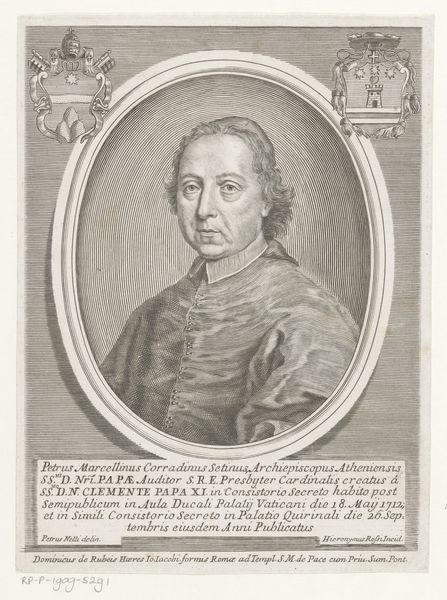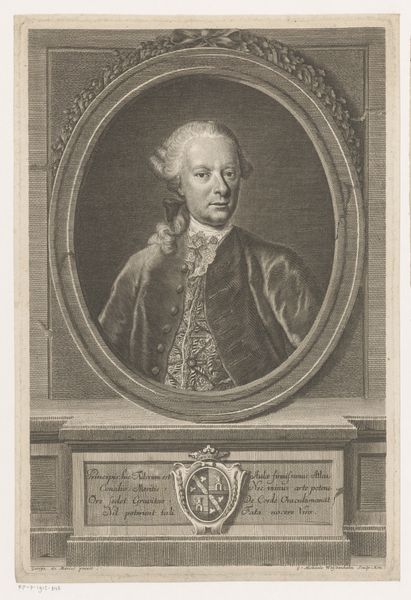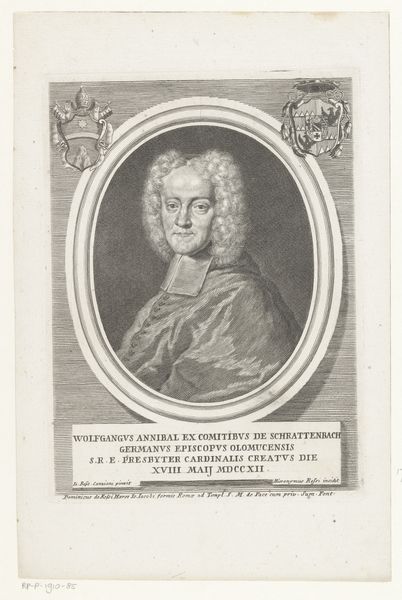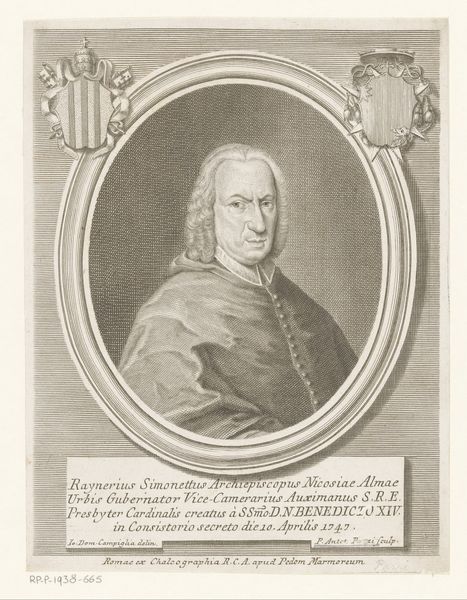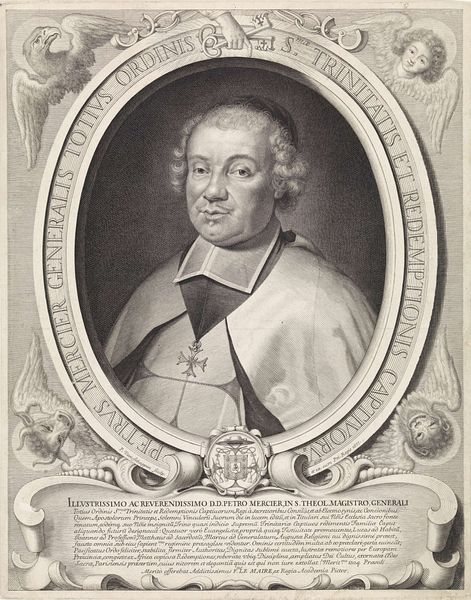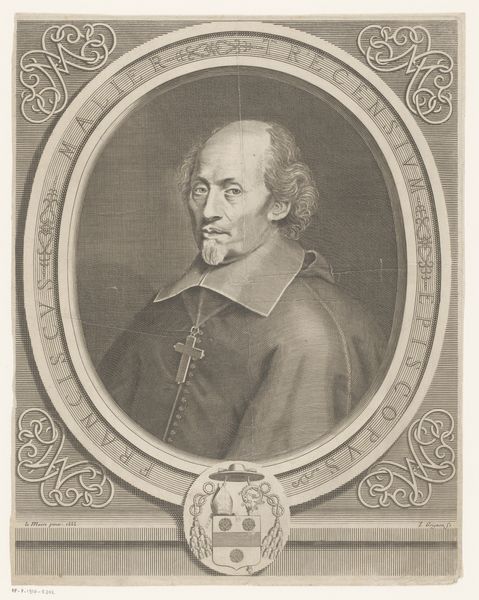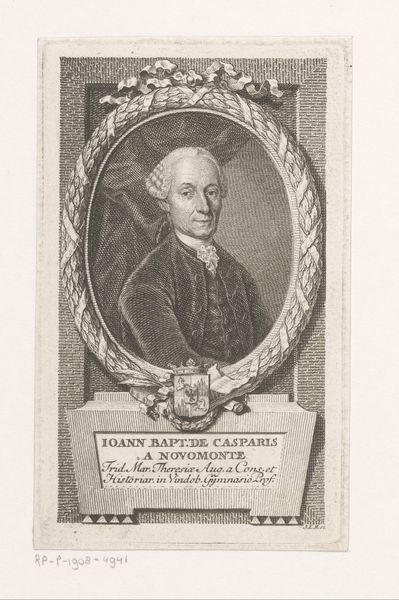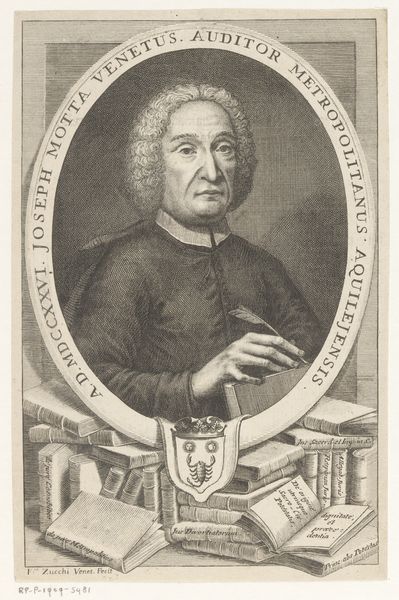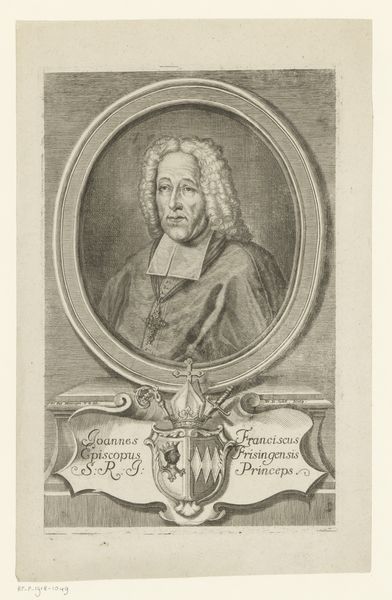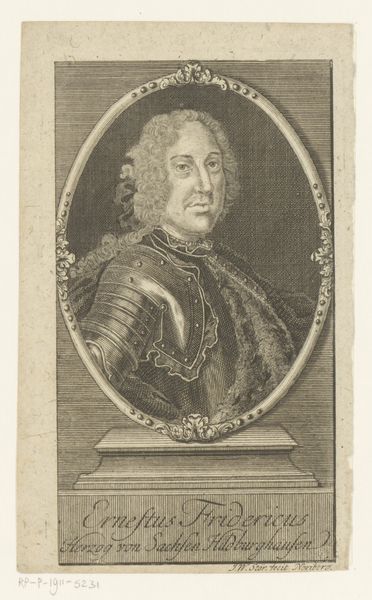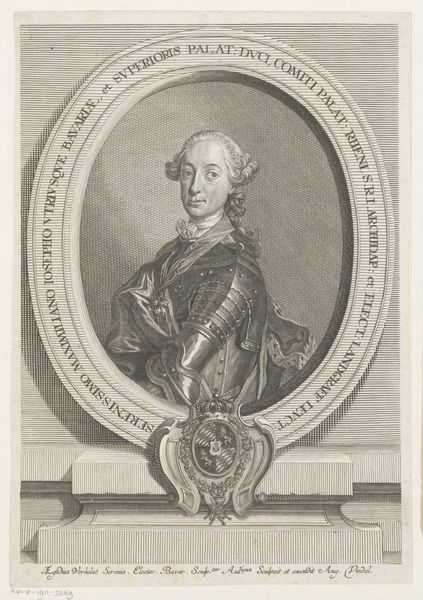
print, engraving
#
portrait
#
baroque
# print
#
old engraving style
#
history-painting
#
engraving
Dimensions: height 215 mm, width 160 mm
Copyright: Rijks Museum: Open Domain
Curator: This engraving, dating from somewhere between 1715 and 1762, presents us with a portrait of Cardinal Giambattista Patrizi. The artist was Girolamo (II) Rossi, working in the baroque style. What is your initial reaction to the work, Editor? Editor: It's immediately striking, and frankly, feels quite austere. The subject's gaze is direct, almost challenging, and the print itself—that deep etching into the paper—speaks of deliberate, meticulous work. I'm interested in what it tells us about the printmaking practices of the era. Curator: The starkness you note, is beautifully structured within the oval frame, which isolates and elevates the figure. Notice the delicate hatching employed to sculpt the forms; Rossi uses these fine lines to construct volume and create subtle modulations of light on Patrizi's face. Editor: Yes, and the decision to use engraving, as opposed to other printing methods, highlights its intended audience and speaks to how a piece like this might have been consumed—perhaps as a readily reproducible object accessible to those outside the traditional realm of painted portraiture. Was printmaking viewed with less reverence in comparison to painting at the time? Curator: Indeed. The composition is clever. The heraldic emblems at the upper corners, rendered with impressive detail, subtly balance the textual inscription below the portrait, creating a visual harmony. And observe how Patrizi's garments, while not flamboyant, nonetheless convey his rank and authority. Editor: I'm drawn to the evidence of hand-labor in this piece: the carving of the lines into the metal plate, the careful inking, the physical act of printing... it speaks to an entirely different artistic ecosystem compared to painting, something that would have required collaboration between the designer, engraver, and the publisher too. Curator: These elements converge to communicate not only Patriczi's individual likeness, but also his role and place within the church and society of his time. I admire how it bridges the specific and the universal. Editor: I agree. This close look reveals a network of skilled artisans working behind the scenes, revealing insights into Baroque image culture that are as compelling as they are enduring.
Comments
No comments
Be the first to comment and join the conversation on the ultimate creative platform.

